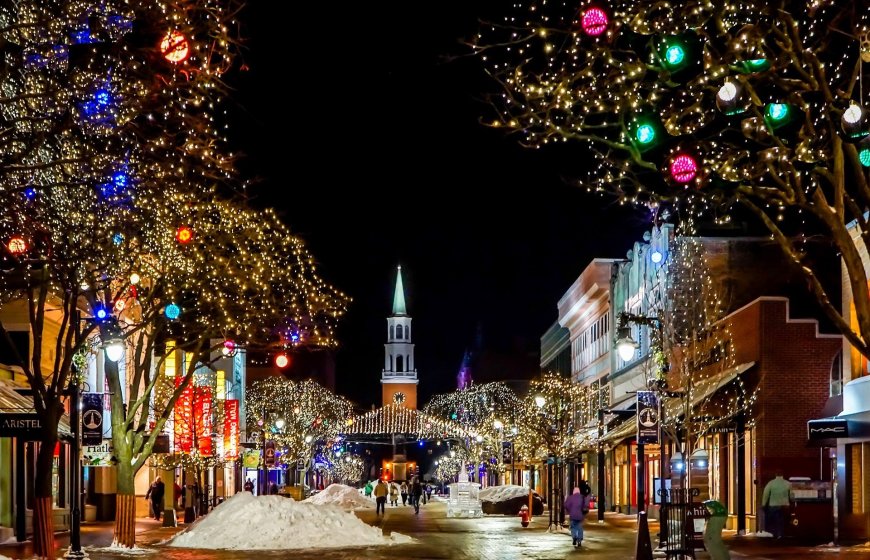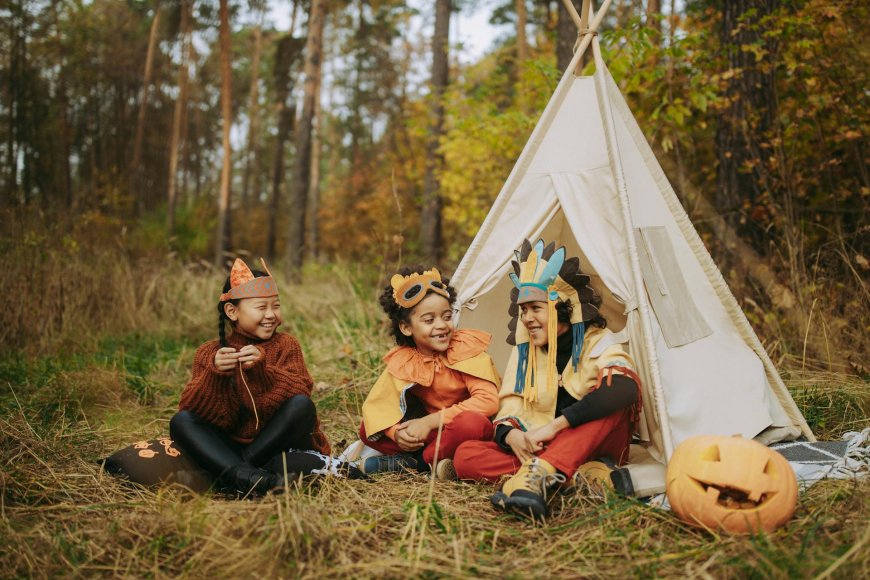Introduction
The United States celebrates a wide array of festivals and traditions throughout the year. These events, ranging from national holidays to local festivals, provide insight into the country's cultural heritage and values. This article explores the various festivals and traditions, their origins, how they are celebrated, and their cultural significance.
Major Festivals and Traditions in the United States

New Year's Day (January 1st)
New Year's Day marks the beginning of the calendar year and is celebrated with parties, fireworks, and resolutions. It is a time for new beginnings and reflections on the past year.
Independence Day (July 4th)
Independence Day, also known as the Fourth of July, commemorates the adoption of the Declaration of Independence in 1776. It is celebrated with fireworks, parades, barbecues, and patriotic displays.
Thanksgiving (Fourth Thursday in November)
Thanksgiving is a time for giving thanks for the harvest and blessings of the past year. It has its roots in a 1621 harvest feast shared by the Pilgrims and Native Americans. The day is celebrated with a feast, featuring turkey, stuffing, and other traditional foods.
Christmas (December 25th)
Christmas is a major Christian holiday celebrating the birth of Jesus Christ. It is marked by religious ceremonies, gift-giving, and festive decorations, including Christmas trees and lights.
Halloween (October 31st)
Halloween, originally a Celtic festival called Samhain, is now a popular holiday involving costumes, trick-or-treating, and spooky decorations. It reflects themes of death, the supernatural, and harvest time.
Easter (Date Varies)
Easter celebrates the resurrection of Jesus Christ and is the most important Christian holiday. Traditions include church services, egg hunts, and festive meals.
Labor Day (First Monday in September)
Labor Day honors the American labor movement and the contributions of workers. It marks the unofficial end of summer and is celebrated with parades, picnics, and family gatherings.
Origins and Cultural Significance
New Year's Day
-
Origin: Ancient Babylonian festival celebrating the start of the new year.
-
Cultural Significance: Symbolizes fresh starts and new opportunities.
Independence Day
-
Origin: Commemoration of the Declaration of Independence in 1776.
-
Cultural Significance: Celebrates American freedom and patriotism.
Thanksgiving
-
Origin: 1621 harvest feast shared by Pilgrims and Native Americans.
-
Cultural Significance: Reflects gratitude and appreciation for blessings.
Christmas
-
Origin: Christian celebration of the birth of Jesus Christ.
-
Cultural Significance: Focuses on family, giving, and religious observance.
Halloween
-
Origin: Celtic festival of Samhain, marking the end of the harvest season.
-
Cultural Significance: Celebrates themes of death and the supernatural.
Easter
-
Origin: Christian celebration of the resurrection of Jesus.
-
Cultural Significance: Represents renewal and hope.
Labor Day
-
Origin: Created by the labor movement in the late 19th century.
-
Cultural Significance: Honors workers' contributions to society.
How These Festivals Are Celebrated

New Year's Day
-
Celebrations: Parties, fireworks, resolutions.
-
Preparations: Planning gatherings, fireworks displays, making resolutions.
Independence Day
-
Celebrations: Fireworks, parades, barbecues.
-
Preparations: Organizing community events, purchasing fireworks, decorating with flags.
Thanksgiving
-
Celebrations: Feasts, family gatherings, parades.
-
Preparations: Cooking traditional meals, setting up decorations, organizing family activities.
Christmas
-
Celebrations: Gift-giving, festive meals, religious services.
-
Preparations: Decorating homes, buying gifts, attending church.
Halloween
-
Celebrations: Trick-or-treating, costume parties, haunted houses.
-
Preparations: Creating costumes, decorating homes, buying candy.
Easter
-
Celebrations: Church services, egg hunts, festive meals.
-
Preparations: Decorating eggs, planning meals, attending services.
Labor Day
-
Celebrations: Parades, picnics, family gatherings.
-
Preparations: Organizing events, planning picnics, decorating.
Festive Foods

Different festivals feature distinct foods that are integral to their celebrations:
-
Thanksgiving: Turkey, stuffing, cranberry sauce, pumpkin pie.
-
Christmas: Roast beef, ham, fruitcake, cookies.
-
Halloween: Candy, caramel apples, pumpkin treats.
-
Easter: Ham, lamb, Easter eggs, hot cross buns.
Favorite Festivals Ranking (as of 2024)
The table below presents the ranking of the most popular festivals in the United States based on recent surveys:
|
Rank
|
Festival
|
Percentage of Popularity
|
Reason for Popularity
|
|
1
|
Christmas
|
75%
|
Family time, gift-giving, festive atmosphere
|
|
2
|
Thanksgiving
|
68%
|
Family gatherings, traditional meals
|
|
3
|
Independence Day
|
60%
|
Patriotic celebrations, fireworks
|
|
4
|
Halloween
|
55%
|
Costumes, trick-or-treating, fun activities
|
|
5
|
New Year's Day
|
50%
|
Parties, new beginnings, resolutions
|
Understanding These Festivals and Traditions
To gain a deeper understanding of these festivals and traditions, one can:
-
Read Books and Articles: There are many resources that delve into the history and cultural significance of these celebrations.
-
Visit Museums and Historical Sites: Museums often have exhibits that explain the origins and practices of various festivals.
-
Participate in Community Events: Engaging in local celebrations provides firsthand experience and insights.
Preserving and Promoting Festivals and Traditions
Preserving these festivals and traditions is essential for maintaining cultural heritage. Some ways to ensure their continuity include:
-
Education: Teaching children and communities about the importance and history of these events.
-
Documentation: Recording stories, recipes, and customs associated with each festival.
-
Community Involvement: Encouraging participation in local events and traditions.
FAQ
Q: What is the most celebrated festival in the United States?
A: Christmas is the most celebrated festival in the United States, enjoyed by a significant majority of Americans.
Q: How did Thanksgiving originate?
A: Thanksgiving originated from a 1621 harvest feast shared by the Pilgrims and Native Americans.
Q: What are some traditional foods for Halloween?
A: Traditional Halloween foods include candy, caramel apples, and various pumpkin-based treats.
Q: Why is Independence Day important?
A: Independence Day is important because it commemorates the adoption of the Declaration of Independence, marking the birth of the nation.
Q: How can I learn more about American festivals and traditions?
A: You can learn more by reading books, visiting museums, and participating in community events.
Festivals and traditions in the United States offer a window into the nation's rich cultural tapestry. By understanding, celebrating, and preserving these events, we keep alive the stories and values that define American society. Whether through the joyous fireworks of Independence Day or the heartfelt gratitude of Thanksgiving, each festival brings people together, fostering a sense of community and shared heritage.
